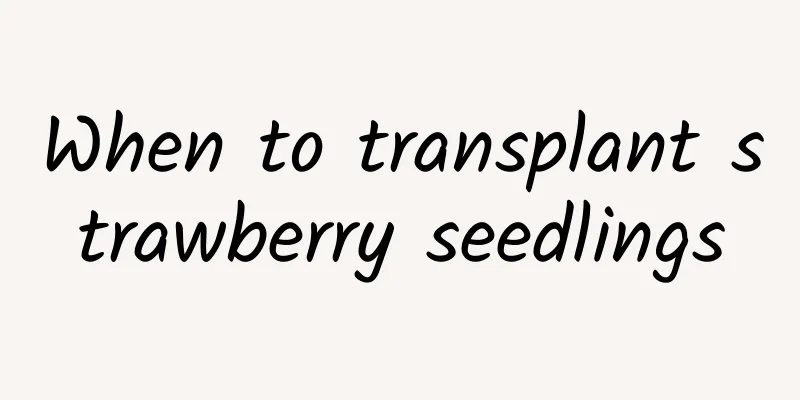When to transplant strawberry seedlings

|
Strawberry is a delicious and nutritious fruit, rich in nutrients such as vitamins, carotene, cellulose, iron, calcium, ellagic acid and anthocyanins. Regular consumption can protect eyesight and aid digestion. Because strawberries taste sweet and sour, they are very popular among young people, and many people choose to grow them at home. Transplanting time of strawberry seedlingsThe best transplanting temperature for strawberry seedlings is between 15 and 25 degrees, so it can be done in September and October in autumn. It is recommended to do it on cloudy days or after 5 pm, because the temperature during this period will be relatively low, and the survival rate will reach over 90%. How to transplant strawberry seedlings1. Soil and seedling selection It is recommended to choose neutral or slightly acidic soil containing sufficient organic matter and good drainage for planting strawberries. For seedlings, it is recommended to choose seedlings with good growth and try to choose varieties with strong cold resistance. When selecting seedlings, you must also pay attention to not choosing seedlings with diseases, pests, and mechanical damage. 2. Transplanting method Strawberry seedlings need to be given enough base fertilizer before transplanting. Generally, decomposed organic fertilizer is chosen, mixed with an appropriate amount of calcium fertilizer and potassium fertilizer. When transplanting, pay attention to the roots being level with the ground. If it is too shallow, the seedlings may be sunburned. If it is too deep, the leaves on the strawberry seedlings will easily rot and turn yellow, which will result in a low survival rate of the strawberry seedlings. Management of strawberry seedlings after transplantingAfter transplanting, the strawberry seedlings need to be watered thoroughly to keep the soil slightly moist. After the soil surface is dry, the soil needs to be loosened with a hoe to ensure moisture in the soil. In addition, a diffuse light environment should be provided to avoid exposure to sunlight, so as to facilitate resumption of growth. |
<<: What are the cultivation methods and precautions of pepper grass
>>: Advantages and disadvantages of fruit roses
Recommend
How to take cuttings of Gloxinia leaves
Gloxinia is a flower that many people like to gro...
When to plant colored calla lilies and how to prepare the soil
1. Planting time Planting of colored calla lilies...
Peony seed planting time and method cultivation technology and management
Peony seed planting time Peony seeds are usually ...
How to grow Christmas cactus and how to cultivate it
How to grow Christmas cactus Christmas cactus is ...
The reason why cucumber flowers but does not bear fruit
Cucumber is a popular vegetable grown all over th...
When is the best time to prune pomegranate potted plants? In which month is it best to prune?
Pomegranate potted plant pruning time It is gener...
Cultivation methods and precautions of Dendrobium officinale
Growth habit First of all, it has relatively high...
Cucumber Growing Conditions and Characteristics
Cucumber Growing Conditions Cucumbers are general...
How often should sugarcane be watered?
How often should sugarcane be watered? During the...
When is the best time to plant cabbage?
Chinese cabbage, as a member of the cruciferous f...
How to grow camellia to grow well, how to grow camellia
1. Loose soil For camellia, loose soil is very he...
How to prune daisies
Daisy Pruning Time Daisies can be pruned in sprin...
Four seasons maintenance method of torch flower
Summer maintenance tips for torch flower In summe...
There are 3 methods of rose cuttings. Learn one and you will get 100% success!
Rose water plug Steps: 1. The water cutting metho...
How to eat figs and what are the benefits of eating figs
1. How to eat 1. Eat raw: The most common way to ...









